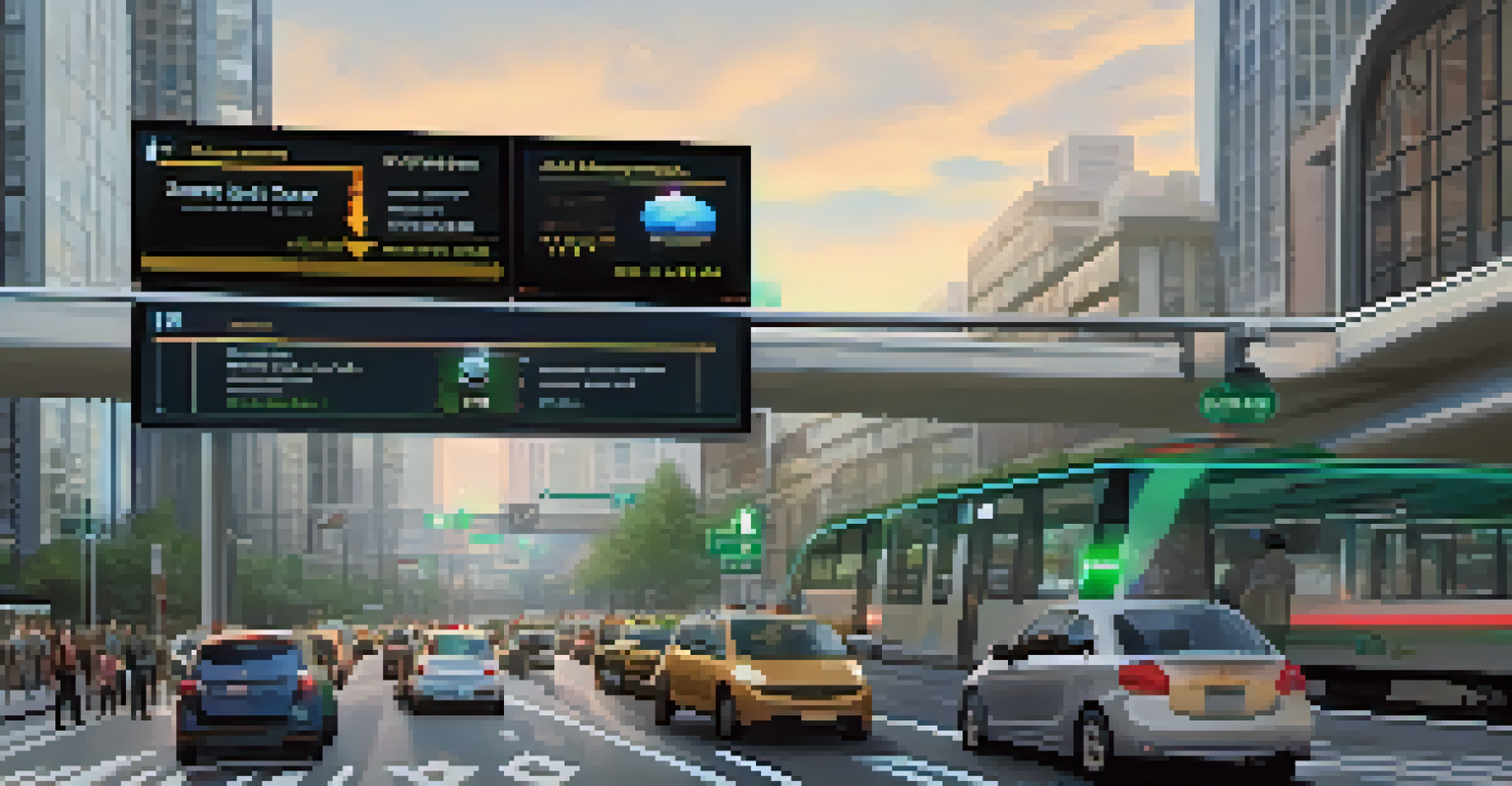Smart Infrastructure: Building the Cities of Tomorrow

Understanding Smart Infrastructure and Its Importance
Smart infrastructure refers to the integration of advanced technology into the physical framework of cities. This includes everything from smart buildings that adjust energy use based on occupancy to intelligent transportation systems that reduce traffic congestion. The importance of this concept cannot be overstated, as it directly impacts the livability and sustainability of urban areas.
The cities of the future are not just about technology; they’re about people and the communities they serve.
As urban populations continue to grow, cities face increasing challenges related to resource management, environmental sustainability, and public safety. Smart infrastructure provides innovative solutions to these challenges, helping cities to become more efficient and resilient. By harnessing data and technology, cities can improve services and enhance the quality of life for residents.
For example, smart sensors can monitor air quality in real-time, allowing city officials to take immediate action when pollution levels rise. This proactive approach not only protects public health but also promotes a cleaner environment, showcasing the potential of smart infrastructure to create healthier urban spaces.
The Role of Data in Smart Infrastructure Development
Data is at the heart of smart infrastructure, acting as the fuel that powers decision-making and optimization. Cities collect vast amounts of data from various sources, including traffic cameras, public transportation systems, and social media. Analyzing this data enables city planners to identify patterns and make informed decisions that enhance urban living.

For example, data analytics can reveal peak traffic hours, helping city officials to adjust traffic light timings accordingly and reduce congestion. Additionally, data-driven insights can improve public transport routes, ensuring they meet the needs of the community while maximizing efficiency.
Smart Infrastructure Enhances Livability
Integrating advanced technology into urban frameworks improves resource management and public safety, making cities more efficient and sustainable.
However, with great data comes great responsibility. Cities must prioritize data privacy and security to protect residents' information. Striking a balance between leveraging data for improvements while safeguarding individual privacy is crucial for fostering trust in smart infrastructure initiatives.
Smart Transportation: Enhancing Mobility in Cities
Transportation is a critical component of urban infrastructure, and smart technologies are revolutionizing how people navigate cities. Innovations such as smart traffic lights, real-time public transit updates, and ride-sharing apps are enhancing mobility and reducing travel times. These technologies not only improve convenience but also contribute to a more sustainable urban environment.
Data is the new oil, and it has the power to transform the way we live, work, and interact with our environment.
For instance, smart traffic management systems use algorithms to optimize traffic flow, minimizing delays and reducing vehicle emissions. Additionally, electric and autonomous vehicles are gaining traction, encouraging greener transportation options and decreasing the reliance on fossil fuels.
The implementation of smart transportation systems can also promote inclusivity. By providing accessible options for individuals with disabilities and ensuring that public transportation is reliable and efficient, cities can create a more equitable mobility landscape for all residents.
Sustainable Energy Solutions in Smart Cities
Sustainability is a core principle of smart infrastructure, particularly when it comes to energy consumption. Smart cities are increasingly adopting renewable energy sources, such as solar and wind power, to reduce their carbon footprints. Additionally, smart grids enable better management of energy distribution, ensuring that power is used efficiently and sustainably.
For example, smart meters allow residents to monitor their energy usage in real-time, encouraging more responsible consumption. This transparency not only helps individuals save on their utility bills but also contributes to overall energy conservation efforts.
Data Drives Urban Decision-Making
Cities leverage vast amounts of data to optimize services and enhance quality of life, while balancing privacy and security concerns.
Moreover, integrating energy-efficient building designs with smart technologies can lead to substantial reductions in energy usage. By utilizing smart thermostats and automated lighting systems, buildings can adapt to the needs of their occupants, further enhancing energy efficiency in urban settings.
Smart Water Management for Urban Resilience
Water management is another critical aspect of smart infrastructure, particularly in areas prone to drought or flooding. Smart water systems utilize sensors and data analytics to monitor water usage, detect leaks, and predict demand. This proactive approach not only conserves resources but also enhances the resilience of urban water supplies.
For instance, cities can implement smart irrigation systems that adjust watering schedules based on weather conditions, ensuring that water is used efficiently in public parks and landscaping. Additionally, real-time monitoring of water quality can help identify contamination issues promptly, protecting public health.
Furthermore, by integrating stormwater management with smart infrastructure, cities can mitigate the impacts of heavy rainfall and reduce flooding. These systems can capture and store excess water, which can then be reused for irrigation or other non-potable purposes, promoting sustainability and resilience.
Building Smart Communities through Citizen Engagement
Creating smart infrastructure is not just about technology; it’s also about people. Engaging citizens in the planning and implementation process is essential for building smart communities. When residents have a voice in decision-making, they are more likely to support and participate in smart initiatives.
For example, cities can utilize mobile apps to gather feedback from residents on proposed projects or infrastructure changes. This not only fosters community involvement but also ensures that initiatives align with the needs and desires of the population.
Sustainable Solutions for Urban Resilience
Smart cities utilize renewable energy and efficient water management systems, promoting sustainability and reducing environmental impact.
Moreover, public awareness campaigns can educate residents on the benefits of smart infrastructure, encouraging them to adopt sustainable practices. By fostering a sense of ownership and collaboration, cities can create vibrant, connected communities that thrive in the era of smart infrastructure.
Challenges and Considerations for Smart Infrastructure
While the benefits of smart infrastructure are clear, cities must also navigate a range of challenges in its implementation. Issues such as funding, technology integration, and public resistance can hinder progress. Moreover, ensuring equitable access to smart technologies is crucial to prevent disparities within urban populations.
For instance, cities may struggle to secure the necessary funding for large-scale smart projects, particularly in economically disadvantaged areas. To address this, innovative financing models, such as public-private partnerships, can be explored to pool resources and expertise.

Additionally, as cities adopt new technologies, ongoing training and education for both city officials and residents are vital. Ensuring that everyone is equipped to navigate and benefit from smart infrastructure will help foster a more inclusive and sustainable urban environment.